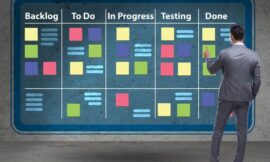The city transformed a manual application process to distribute emergency financial help to people out of work due to the coronavirus.
The CTO of San Antonio used a low-code approach to revamp a financial assistance program that went from dozens of applications a week to thousands due to the coronavirus.
Before people lost their jobs because of lockdowns as a result of COVID-19, the city’s Emergency Housing Assistance Program had a manual application process. The program helps people who are at risk of losing their homes with direct grants to cover rent, mortgage payments, and utilities. Residents who lost their jobs due to the shut down also can get up to $300 to pay for groceries, gas, internet access for homeschooling, and other basic needs.
The city relaunched the program in late April and received 5,300 applications in the first week, up from the normal volume of about 50 per week.
The city worked with two tech firms, Kinetech, a Texas-based provider of custom enterprise software, and Mendix, a low-code platform for software development, to digitize the manual application process.
Kevin Goodwin, chief technology officer for the City of San Antonio, said that his department has been moving toward low-code and forms-based tools and Agile software development techniques over the last few years.
“San Antonio’s COVID-19 response and recovery efforts have been powered in large part by rapidly deployed low-code solutions including ESRI tools for community outreach, an OpenCities web portal for community engagement, a ServiceNow application for employee outreach, and most recently a small business supplies request and fulfillment application based on our Verint/KANA CRM platform,” he said.
Goodwin said all of these solutions as well as the Mendix application for financial assistance were delivered in days or weeks to meet new needs as they have developed and evolved.
“For the City of San Antonio, low code is here to stay,” he said.
SEE: Tips for building a successful career as a software engineer (free PDF)
Goodwin said that an Agile team leader is in charge of these projects while the product owner sets the priority list for the app’s functionality.
“The developer works in close collaboration with the product owner to continuously deliver small pieces of functionality,” he said. “Flexibility and empowerment are keys to success.”
Derek Roos, founder and CEO of Mendix, said that the Mendix platform was built specifically to encourage cross-team collaboration.
“Software developers who have great technical skill can work together on the same platform with business people who have tremendous domain expertise to build solutions that deliver greater relevance, innovation, and business impact than are possible with traditional, code-based development,” he said.
Roos said that improving communication between business and IT can reduce the amount of rework.
“When business and IT can communicate with clarity, ease, and detail, solutions can be purpose-built instead of “one size fits all,” and they can be deployed quickly to meet the market’s targeted need,” he said.
Making low-code work for city governments
Roos said the low-code approach is best for digitizing manual or paper processes in the areas of transportation, postal services, utilities, housing, and tourism, especially for government agencies working with a tightly controlled budget.
“Mendix enables people who have less technical skill — or people with high technical skill who simply need to bring ideas to market faster — with the means to collaborate and iterate innovative solutions that effectively solve problems and create positive impact, whether it’s a highly technical app for enabling citizens to access benefits, tourism solutions, or simply a citizen engagement platform for a city,” he said.
Mendix has worked with Rotterdam in the Netherlands to build a native mobile app to allow residents to register the license plates of the cars of people who come to visit. Altogether, 80,000 residents of Rotterdam have a license for visitor parking, and register 2.5 million cars per year. The app processes 2.5 million visitor parking licenses each year and includes biometric authentication and offline functionality.
Canada Post and Post NL, two delivery services, used the Mendix low-code platform to shift their business model from letters to parcels. This required building a supply chain system that supports ten million transactions per day and managed 250 million parcels in 2018.
Mendix is offering free 90-day licenses to city governments to support the response to the coronavirus.
Forrester’s Wave report on low-code development platforms listed Mendix as a leader in the market along with Microsoft, OutSystems, Kony, and Salesforce.
The analysts described basic development services as table stakes as these leading vendors have started to offer business process automation, real-time applications, and AI services, as well as large, mission-critical apps.
Also see

Image: SeanPavonePhoto/Getty Images/iStockphoto
Source of Article




